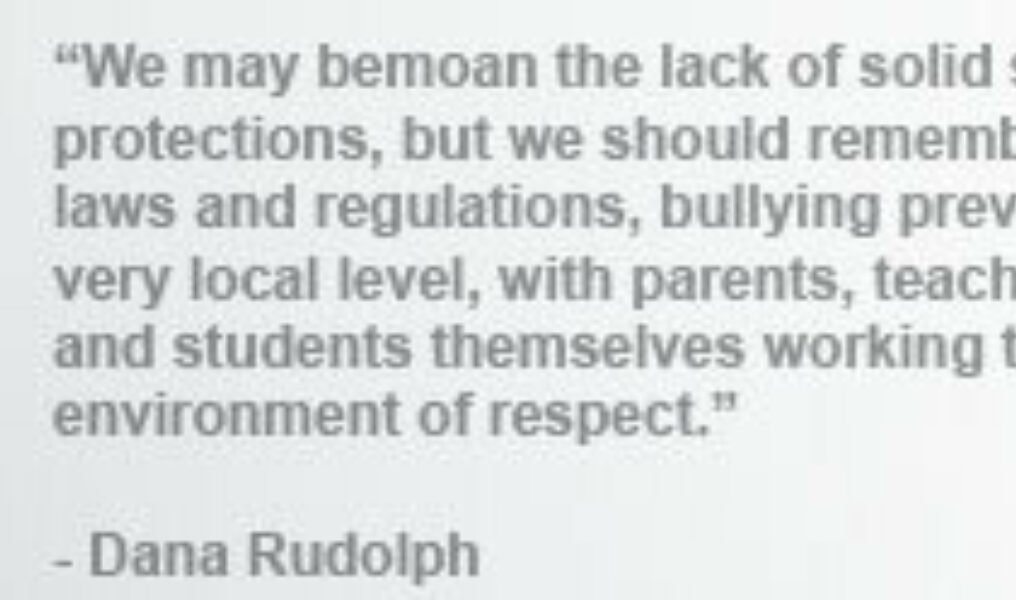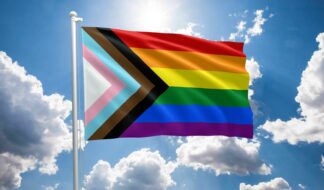by Dana Rudolph

Back-to-school time is upon us once again, and LGBT parents are busy buying pencils and notebooks, rulers and knapsacks. We're not that different from any others.
For many LGBT parents, however, the start of the school year brings up concerns about our children's inclusion and safety. To begin, we may wonder about how and whether to come out to our children's new teachers. How do we get a sense of whether they will create an inclusive classroom?
There are three basic approaches a parent can take. First, one can wait until any questions or issues arise. Some parents may feel most comfortable with this less-intrusive method. For parents of older students, too, this may be the way to go, allowing the children to take control over how and when to come out about their families.
Others may choose to be more proactive, setting up a time to meet with the teacher, get a feel for their commitment to inclusion, and answer any questions they may have. If you think there may be issues, this could be the best way to bring them into the open. On the other hand, it might be overkill – for all you know, the teacher could be LGBT her/himself, or a strong ally.
A more middle-ground approach would be to find a way – without making a special appointment – to let your children's teachers know you are an LGBT family. If you are a two-parent family, for example, make sure both of you take your child to school on the first day or go to a start-of-year parent gathering. Make a point of introducing yourselves as "So-and-so's parents."
There is no one right answer for every family. Parents may even mix methods as they deal with homeroom teachers as well as music, art and physical education specialists.
Beyond general issues of inclusion, many LGBT parents may also be rightly concerned about bullying. Studies by the Gay and Lesbian and Straight Education Network have shown that one of the most frequent reasons students are harassed is because of their real or perceived sexual orientation. This puts both LGBT students and non-LGBT children of LGBT parents at particular risk.
A Michigan anti-bullying bill passed the state House in May, and now awaits action in the Senate. It does not, however, specifically name sexual orientation and gender identity as protected categories, although doing so has been shown – by GLSEN and by the U.S. Supreme Court in the landmark gay-rights case Romer v. Evans – to make such laws more effective. An earlier version of the bill died in the Senate in 2008 because senators could not agree on whether to enumerate the categories of victims.
And on Aug. 11 and 12, the U.S. Department of Education's Office of Safe and Drug-Free Schools, headed by GLSEN founder Kevin Jennings, held a national conference on bullying which several LGBT groups attended. But if it has taken a year and a half into the Obama administration just to have a conference on the subject, one might surmise it will take even longer to see any action. And several bills that would address LGBT-based discrimination and bullying in schools look unlikely to move during this session of Congress.
We may bemoan the lack of solid state and federal protections, but we should remember that regardless of laws and regulations, bullying prevention begins at the very local level, with parents, teachers, administrators and students themselves working together to create an environment of respect.
We should not, therefore, start the school year by dwelling on all that could go wrong. While we should prepare for the worst, it also behooves us to think of all the positives. There are allies out there, from parents of our children's existing friends to parents and teachers with LGBT relatives (and even some who are LGBT themselves). There are non-LGBT families who might face similar concerns because of race, religion, disability, adoptive status, being a single parent, or other factors. We can reach out and build bonds based on our desire for acceptance.
For parents wanting to recommend resources to their schools, or to gain more insight on school-related matters themselves, HRC's Welcoming Schools Guide remains the best single source for all age groups. It offers suggestions on how to create welcoming classrooms for LGBT students and those with LGBT parents, lesson plans for teachers who want to address diversity issues more directly and lists of books and other resources. It can be used as part of a structured curriculum, but is also a useful standalone guide. It can be found at http://www.welcomingschools.org.
Other organizations offering school-related resources include GLSEN, COLAGE, PFLAG, the Gay-Straight Alliance Network and the National Center for Lesbian Rights. Also, the American Library Association's Rainbow Bibliography offers a librarian-selected list of LGBT-inclusive children's and young adult books (http://rainbowlist.wordpress.com).
The most important thing for LGBT parents to remember is that you are not alone. Even if you are the only LGBT family you know of at your school, you may still find other families who support you. And there are more and more LGBT families if you look further afield to your local or state LGBT organizations or online.
No matter what advice we get from others, however, the only global truth is that we must act based on what we feel is right for our own children. May we all learn along with them in the coming year.










